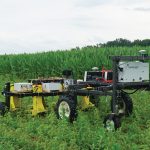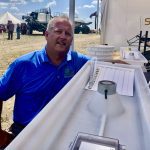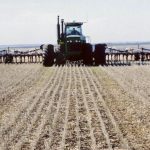
Equipment

The era of uniform application is ending as data drives change
The technology behind precision application isn’t the finished article yet, but it’s getting close

The way we talk about digital agriculture obscures interests behind it, says author
Facebook users pay for use with data. Farmers pay with data and for using it

No end in sight for soaring farm equipment costs
It’s not just new equipment prices that’s shocking, it’s also the spillover in the used market

Ironing out autonomous logistics
AgRobotics Working Group field day shows challenges, benefits of autonomous equipment

Calibrate your combine to boost profits
An hour or two spent properly calibrating your machine could be the most lucrative time you spend this harvest

FROM TOY TO TOOL: The sky’s the limit for farming drones
There’s better software and powerful zooms, and both spraying and seeding are advancing quickly too

Weather shift means questions on spray water quality
With last year’s drought and this year’s flooding, water quality may have changed

The straight and narrow of CTF
Tramline farming can limit compaction, reduce costs, increase production and improve soil health

Tight supply gums up works on parts
Lack of parts is a bad recipe when mixed with the tight timelines of seeding

NDP proposes ‘right to repair’ bill for farm equipment, vehicles
Current laws need updating, but extensive research is needed, says industry expert


